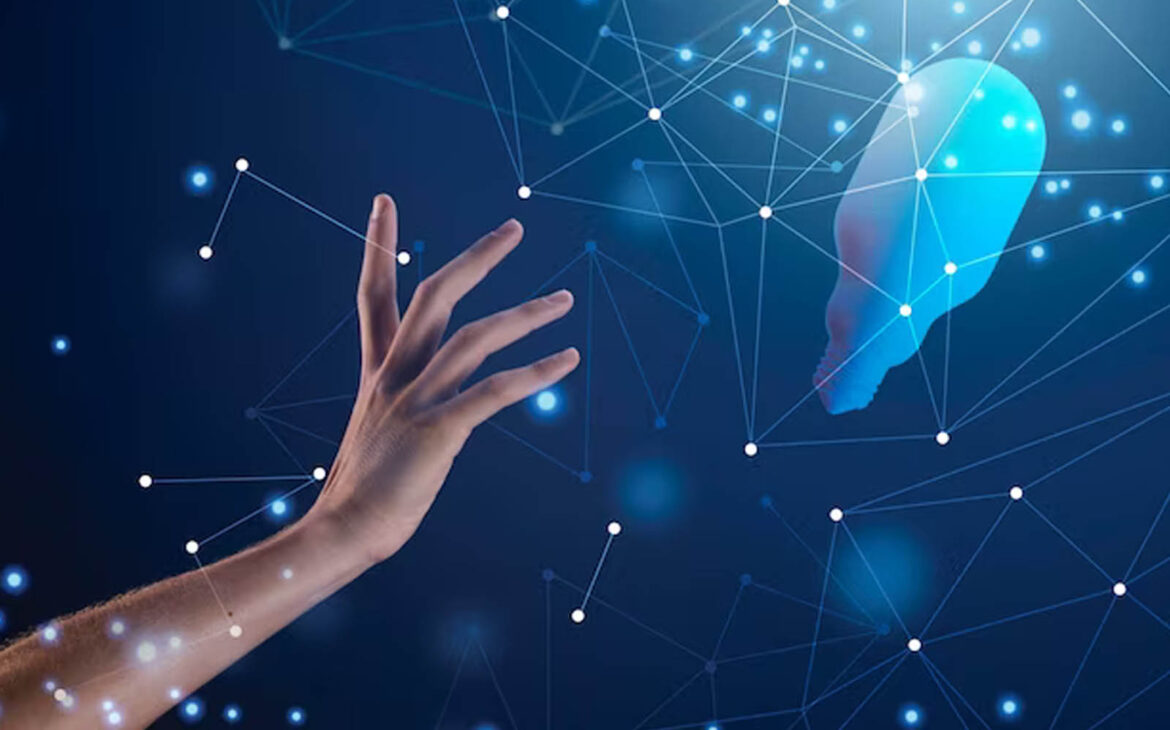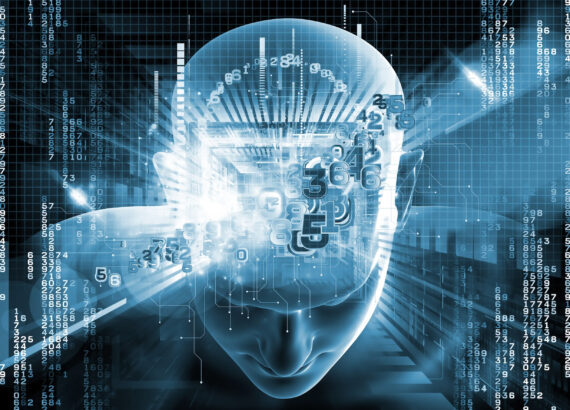Unleashing the Power of Human Potential: The Neural Link Revolution
The human potential is vast and awe-inspiring, yet it remains largely untapped. However, with the advent of neural link technology, we stand at the precipice of an unprecedented revolution that has the power to unlock the true capabilities of the human mind and body. The potential impact of this technology spans across various domains, from healthcare and wellness to education, rehabilitation, and even sports.
This article delves into the neural link revolution, exploring the science behind it, its applications, and the ethical considerations it raises. By understanding and embracing this transformative technology, we have the opportunity to shape a future where human potential knows no bounds. Discover how Neura Link is revolutionizing the way we tap into the limitless potential of the human mind. Explore the groundbreaking technology that is unlocking new possibilities for enhancing cognitive abilities and unleashing the true power of human potential.
Get up to 70% Discount on Amazon (Buy Now)

1. Introduction: The Paradigm Shift in Unleashing Human Potential
Understanding the Limitations of Human Potential
Let’s face it, humans are pretty amazing creatures. We’ve built towering skyscrapers, composed symphonies that tug at our heartstrings and even managed to put the avocado on everything. But despite our impressive accomplishments, there’s no denying that we’re still held back by certain limitations.
Our brains, while marvellous, can sometimes be a little slow on the uptake. We forget where we put our car keys, struggle to learn new skills, and occasionally find ourselves staring blankly at math problems that seem to be written in ancient hieroglyphics. It’s frustrating, to say the least.
But what if we told you there’s a revolutionary technology on the horizon that could change all that? A technology that could unleash the untapped potential of the human mind? Enter Neural Link.
The Emergence of Neural Link Technology
Neural Link technology is the brainchild of visionary entrepreneur Elon Musk. It aims to create a seamless connection between the human brain and computer interfaces, revolutionizing the way we interact with technology and unlocking a whole new realm of possibilities.
Think of it like plugging your brain into a supercharged internet connection. With Neural Link, we can potentially enhance our cognitive abilities, improve our mental health, and pave the way for a future where disabilities are no longer limitations.
2. Understanding the Neural Link Revolution: Exploring the Science Behind it
Neural Link Technology: A Breakthrough in Brain-Machine Interfaces
Neural Link technology relies on the creation of brain-machine interfaces (BMIs) that allow for bidirectional communication between our brains and external devices. These interfaces consist of tiny, flexible threads implanted deep into the brain, which can detect and stimulate neurons with unparalleled precision.
By establishing this connection, Neural Link opens up a world of possibilities. It enables us to control technology with our thoughts, communicate with others directly through our minds, and potentially even augment our cognitive capabilities.
Neuroplasticity: The Key to Unlocking Human Potential
But what about the human brain itself? How can Neural Link truly tap into our full potential? The answer lies in a fascinating phenomenon called neuroplasticity.
Neuroplasticity refers to the brain’s ability to reorganize itself and form new neural connections throughout our lives. With Neural Links and the right stimulation, we can harness this amazing adaptability to optimize our brain’s performance.
Imagine being able to accelerate learning, enhance creativity, and optimize decision-making. Neural Link has the potential to unlock these abilities by leveraging the brain’s innate capacity for change.

3. Applications of Neural Link Technology: Revolutionizing Healthcare and Wellness
Improving Diagnosis and Treatment of Neurological Disorders
Neural Link technology holds immense promise in the field of healthcare. By providing a direct window into the brain, it can revolutionize the diagnosis and treatment of neurological disorders. Conditions like Alzheimer’s, Parkinson’s, and epilepsy could be better understood, leading to more effective therapies and improved quality of life for patients.
Enhancing Mental Health and Well-being
Mental health is another area that could greatly benefit from Neural Link technology. By decoding the intricacies of the brain, we can develop personalized approaches to mental health treatment. Whether it’s managing anxiety, depression, or other mental disorders, Neural Link has the potential to offer tailored solutions for improved well-being.
Transforming Assistive Technologies for Disabilities
Assistive technologies have come a long way in improving the lives of individuals with disabilities, but there is still much room for improvement. Neural Link has the potential to radically transform assistive technologies by creating seamless connections between the brain and external devices.
This could enable those with physical disabilities to regain control and independence in ways that were previously unimaginable.
Get up to 70% Discount on Amazon (Buy Now)

4. Amplifying Cognitive Abilities: Enhancing Learning and Problem-Solving
Accelerating Learning and Knowledge Retention
We’ve all had moments where we wished we could learn new things faster, whether it’s learning a new language or mastering a musical instrument. With Neural Link, that wish might just become a reality. By directly interfacing with the brain, this technology has the potential to accelerate learning and enhance knowledge retention, opening up new frontiers of education.
Enhancing Creativity and Innovation
Creativity is the spark that ignites innovation, but sometimes that spark needs a little extra fuel. Neural Link could provide just that by stimulating specific regions of the brain associated with creative thinking. Imagine a world where artistic brilliance and groundbreaking ideas flourish like never before.
Optimizing Decision-Making and Problem-Solving
Making decisions can be a daunting task, especially when faced with complex problems. Neural Link has the potential to optimize decision-making and problem-solving by providing insights into our brain’s cognitive processes. With this technology, we can make more informed choices, solve intricate puzzles, and navigate the complexities of life with greater ease.
In conclusion, Neural Link technology represents a paradigm shift in unleashing the power of human potential. By bridging the gap between the human brain and technology, we can enhance our cognitive abilities, revolutionize healthcare, and transform the way we approach disabilities. The neural link revolution is upon us and the future looks brighter than ever before. So, strap on your thinking cap and get ready for an exciting journey into the limitless possibilities of the human mind!
5. Augmenting Physical Capabilities: Revolutionizing Rehabilitation and Athletics
Revolutionizing Rehabilitation for Injury Recovery
Recovering from injuries can be a long and challenging process, but with the advent of neural link technology, rehabilitation is undergoing a revolution. By connecting the human brain to external devices, individuals can now receive targeted and precise therapy that accelerates their recovery. Neural link technology allows for personalized rehabilitation programs, ensuring that each person’s specific needs are met. From regaining mobility after a spinal cord injury to recovering motor functions after a stroke, the potential applications of neural link technology in rehabilitation are immense.
Supercharging Athletic Performance and Training
Athletes are constantly pushing the boundaries of human potential, and neural link technology is set to revolutionize the world of athletics. By tapping into the power of the brain, athletes can enhance their performance and take their training to new heights. Neural link devices can provide real-time feedback on technique, help athletes make split-second decisions, and even improve muscle memory. Imagine a sprinter who can fine-tune their form instantly or a basketball player with unparalleled precision in shooting. Neural link technology has the potential to give athletes a competitive edge like never before.
Assisting in Physical Rehabilitation and Prosthetics
For individuals living with physical disabilities or limb loss, neural link technology offers a ray of hope. By connecting the brain to prosthetic devices, people can regain their independence and lead fulfilling lives. Neural link technology allows for seamless integration between the brain and artificial limbs, enabling individuals to control their prosthetics with their thoughts. This breakthrough has the potential to transform the way we perceive and interact with physical disabilities, providing individuals with a newfound sense of freedom and mobility.
Get up to 70% Discount on Amazon (Buy Now)

6. Ethical Considerations: Balancing Advancements and Potential Risks
Privacy and Security Concerns in Neural Link Technology
While the benefits of neural link technology are promising, it’s crucial to address the potential risks and ethical implications. One area of concern is privacy and security. With devices directly connected to the brain, there is a need for stringent safeguards to protect users’ personal information. Ensuring data encryption, secure transmission, and user consent are essential considerations to mitigate any privacy breaches.
Ensuring Equitable Access and Addressing Socioeconomic Disparities
As with any emerging technology, it’s important to consider equitable access and address potential socioeconomic disparities. Neural link technology must not become a privilege accessible only to a select few. Governments, organizations, and researchers need to work together to make these advancements affordable and accessible to all, regardless of socioeconomic background. This inclusivity will allow society to harness the full potential of neural link technology and prevent it from exacerbating existing inequalities.
Addressing Ethical Concerns and Potential Misuse of Technology
As neural link technology continues to advance, ethical concerns arise. It is crucial to establish guidelines and regulations to address potential misuse of the technology. Issues such as unauthorized access, mind control, and invasion of autonomy need to be considered and safeguards implemented. Ethical frameworks and ongoing discussions among professionals, policymakers, and the public are essential to ensure the responsible development and use of neural link technology.
7. The Future of Human Potential Unleashed: Opportunities and Challenges
Unleashing Human Potential in Various Spheres of Life
The possibilities of neural link technology extend far beyond rehabilitation and athletics. The ability to connect our brains to machines opens the door to countless applications across various fields. From education to entertainment, from healthcare to communication, neural link technology has the potential to revolutionize how we experience and interact with the world. It’s an exciting time to be alive as we witness the unfolding of a transformed future where human potential is truly unleashed.
Addressing Societal Implications and Shaping Policy Frameworks
With great technological advancements come significant societal implications. As neural link technology becomes more integrated into our lives, it is essential to address the associated ethical, legal, and social considerations. Policymakers, researchers, and society as a whole must engage in proactive discussions to shape policy frameworks that govern the responsible development and deployment of neural link technology. By doing so, we can ensure its benefits are maximized while minimizing potential risks and challenges.
Navigating the Evolving Landscape of Neural Link Technologies
The field of neural link technology is rapidly evolving, and we must navigate this landscape with awareness and adaptability. Ongoing research, innovation, and collaboration are essential to keep up with the latest developments and harness the full potential of these technologies. Additionally, fostering interdisciplinary collaboration among neuroscientists, engineers, ethicists, and other experts will facilitate a holistic approach to addressing challenges and exploring new opportunities.
8. Embracing the Neural Link Revolution for a Transformed Future
The neural link revolution holds tremendous promise for unleashing the power of human potential. From revolutionizing rehabilitation and enhancing athletic performance to addressing ethical concerns and shaping the future of our society, neural link technology can transform lives. However, we must proceed with caution, maintaining a balance between advancements and potential risks. By embracing this revolution responsibly, we can create a future where the boundaries of human potential are pushed further than ever before. So buckle up, folks, because the neural link revolution is here, and it’s going to be one wild ride!
9. Conclusion
In conclusion, the neural link revolution holds immense promise in unleashing the power of human potential. As we delve deeper into understanding the science behind it and explore its wide-ranging applications, we must also remain vigilant about addressing ethical considerations and potential risks. By embracing this revolutionary technology and harnessing its capabilities responsibly, we have the opportunity to reshape our world, revolutionize healthcare, education, rehabilitation, and various other fields, and pave the way for a future where human potential flourishes like never before. Let us embrace the neural link revolution and embark on a journey towards a transformed and limitless future for humanity.

FAQ
1. What is neural link technology?
Neural link technology refers to the emerging field of brain-machine interfaces that aim to establish a direct connection between the human brain and external devices or systems. It involves utilizing advanced technologies to decode and interpret neural signals, allowing for bidirectional communication between the brain and external devices.
2. How does neural link technology enhance human potential?
Neural link technology has the potential to enhance human potential by enabling us to augment cognitive abilities, such as learning, problem-solving, and decision-making. It can also revolutionize physical capabilities, benefiting rehabilitation, athletics, and assistive technologies. Bridging the gap between humans and technology opens up new frontiers for optimizing human performance in various domains.
3. What are the ethical considerations associated with neural link technology?
As with any transformative technology, neural link technology raises important ethical considerations. These include issues of privacy and security, ensuring equitable access to the technology, and addressing potential misuse or unintended consequences. It is crucial to have robust ethical frameworks in place to guide the development, deployment, and use of neural link technology to ensure its responsible and beneficial implementation.
4. What are some potential future implications of the neural link revolution?
The neural link revolution has the potential to reshape various aspects of our lives. In the future, we might witness advancements in healthcare, leading to improved diagnosis and treatment of neurological disorders. Education and training could also be transformed, accelerating learning and enhancing creativity. Furthermore, neural link technology could have profound implications for rehabilitation, athletics, and the development of assistive technologies, empowering individuals with physical limitations.
Thank you for reading 🙂
If you want to build your website at an affordable price contact: www.nextr.in
Read this: AI Tool That Can Clone Celebrities To Skyrocket Your Business!


















